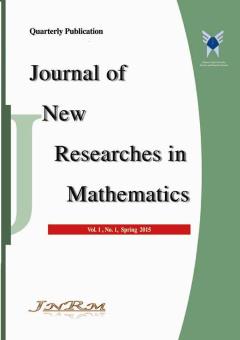رویکرد وزن های مشترک در تحلیل پوششی دادههای فازی بر اساس واحدهای مجازی ایده آل و آنتی ایدهآل: یک مطالعه موردی بر روی شرکت های بیمه
الموضوعات :میثم مجدی 1 , مریم نیکبخت 2 , علی ابراهیم نژاد 3
1 - گروه مهندسی صنایع، موسسه آموزش عالی آیندگان، تنکابن، ایران
2 - گروه ریاضی، دانشگاه پیام نور، تهران، ایران
3 - گروه ریاضی، واحد قائمشهر، دانشگاه آزاد اسلامی، قائمشهر، ایران
الکلمات المفتاحية: تحلیل پوششی دادهها, بهترین کارایی فازی, بدترین کارایی فازی, شاخص رابطه نزدیکی فازی, مجموعه وزنهای مشترک.,
ملخص المقالة :
مطالعه حاضر به ارزیابی عملکرد واحدهای تصمیم گیرنده در محیط فازی از دو منظر خوشبینانه و بدبینانه بر اساس تکنیک پوششی دادهها با رویکرد مجموعه وزنهای مشترک میپردازد. در روش پیشنهادی ابتدا دو واحد مجازی ایدهآل فازی و آنتی ایدهآل فازی تعریف و مقدار کارایی آنها تخمین زده میشود. سپس بر اساس رویکرد مجموعه وزنهای مشترک، بهترین و بدترین کارایی فازی واحدها محاسبه میشود. در نهایت بر اساس شاخص رابطه نزدیکی، کارایی فازی همه واحدها تعیین میشود. مزیتهای مهم روش پیشنهادی مقایسه منطقی واحدها بر اساس یک وزن مشترک، جلوگیری از انعطاف پذیری وزنها و قدرت تمایز بیشتر میان آنها میباشد. در راستای تشریح مدل پیشنهادی 30 شرکت بیمه در ایران شامل دادههای فازی در نظر گرفته شد و عملکرد آنها مورد بررسی قرار گرفت.
[1] A. Charnes, W. W. Cooper, and E. Rhodes, “Measuring the efficiency of decision making units.” Eur. J. Oper. Res, vol. 2, no. 6, pp. 429-444, 1978.
[2] W. D. Cook, Y. Roll, and A. Kazakov, “A dea model for measuring the relative efficiency of highway maintenance patrols.” INFOR: information systems and operational research, vol. 28, no. 2, pp. 113-124, 1990.
[3] Y. M. Wang, and Y. Luo, “DEA efficiency assessment using ideal and anti-ideal decision making units.” Applied Mathematics and Nomputation, vol. 173, no. 2, pp. 902-915, 2006.
[4] D. Wu, “A note on DEA efficiency assessment using ideal point: An improvement of Wang and Luo’s model.” Applied Mathematics and Computation, vol. 183, no. 2, pp. 819-830, 2006.
[5] C. Kao, and S. T. Liu, “Fuzzy efficiency measures in data envelopment analysis.” Fuzzy Sets and Systems, vol. 113, no. 3, pp. 427-437, 2000.
[6] , S. Saati, A. Memariani, and . G. R. Jahanshahloo, “Efficiency analysis and ranking of DMUs with fuzzy data.” Fuzzy Optimization and Decision Making, vol. 1, no. 3, p. 255-267, 2002.
[7] C. Kao, and S. T. Liu, “Efficiencies of two-stage systems with fuzzy data.” Fuzzy Sets and Systems, vol. 176, no. 1, pp. 20-35, 2011.
[8] S. Lozano, “Process efficiency of two-stage systems with fuzzy data.” Fuzzy Sets and Systems, vol. 243, pp. 36-49, 2014.
[9] S. Saati, and A. Memariani, “Reducing weight flexibility in fuzzy DEA.” Applied Mathematics and Computation, vol. 161, no. 2, pp. 611-622, 2005.
[10] A. Hatami-Marbini, S. Saati, amd M. Tavana, “An ideal-seeking fuzzy data envelopment analysis framework.” Applied Soft Computing, vol. 10, no. 4, pp. 1062-1070, 2010.
[11] J. Puri, and S. P. Yadav, “A fuzzy DEA model with undesirable fuzzy outputs and its application to the banking sector in India.” Expert Systems with Applications, vol. 41, no. 14, pp. 6419-6432, 2014.
[12] H. E. Shermeh, S. E. Najafi, and M. H. Alavidoost, “A novel fuzzy network SBM model for data envelopment analysis: A case study in Iran regional power companies.” Energy, vol. 112, pp. 686-697, 2016.
[13] B. Simsek, and F. Tüysüz, “An application of network data envelopment analysis with fuzzy data for the performance evaluation in cargo sector”. Journal of Enterprise Information Management, vol. 31, no. 4, pp. 492-509 2018.
[14] M. Izadikhah, “Modelling Bank Performance: A Novel Fuzzy Two-Stage DEA Approach.” Fuzzy Information and Engineering, vol. 11, no. 2, pp. 149-174, 2019.
[15] C. Heydari, H. Omrani, H. and R. Taghizadeh, “A fully fuzzy network DEA-range adjusted measure model for evaluating airlines efficiency: a case of Iran.” Journal of Air Transport Management, vol. 89, pp.101923, 2020.
[16] S. Kazemi, M. Tavana, M. Toloo, and N. A. Zenkevich, “A common weights model for investigating efficiency-based leadership in the russian banking industry.” RAIRO-Operations Research, vol. 55, no. 1, pp. 213-229, 2021.
[17] A. Fathi, and R. Farzipoor Saen, “Assessing sustainability of supply chains by fuzzy Malmquist network data envelopment analysis: Incorporating double frontier and common set of weights.” Applied Soft Computing, vol 113, pp. 107923, 2021.
[18] S. Tabatabaei, M. R. Mozaffari, M. Rostamy-Malkhalifeh, and F. Hosseinzadeh Lotfi, “Fuzzy efficiency evaluation in relational network data envelopment analysis: application in gas refineries.” Complex & Intelligent Systems, vol. 8, no. 5, pp.4021-4049, 2022.
[19] Y. M. Wang, Y. Luo, and L. Liang, “Fuzzy data envelopment analysis based upon fuzzy arithmetic with an application to performance assessment of manufacturing enterprises.” Expert systems with applications, vol. 36, no. 3, pp. 5205-5211, 2009.
[20] B. Bhardwaj, J. Kaur, and A. Kumar, “A new fuzzy CCR data envelopment analysis model and its application to manufacturing enterprises. In Soft Computing Applications for Group Decision-making and Consensus Modeling (pp. 345-368). Springer, Cham, 2017.
[21] A. Azar, M. Zarei Mahmoudabadi, and A. Emrouznejad, “A new fuzzy additive model for determining the common set of weights in Data Envelopment Analysis.” Journal of Intelligent & Fuzzy Systems, vol. 30 no. 1, pp. 61-69, 2016.
[23] A. Ebrahimnejad, and N. Amani, “ Fuzzy data envelopment analysis in the presence of undesirable outputs with ideal points.” Complex & Intelligent Systems, vol. 7, no.1, pp. 379-400, 2021.
[24] A. Charnes, W. W. Cooper, B. Golany, L. Seiford, and J. Stutz, “Foundations of data envelopment analysis for Pareto-Koopmans efficient empirical production functions.” Journal of Econometrics, vol. 30, no. 1-2, pp. 91-107, 1985.
[25] A. Charnes, and W. W. Cooper, “Programming with Linear Fractional Functional. Naval Research Logistics Quarterly, vol. 9, no. 3, pp. 181-186, 1962.


